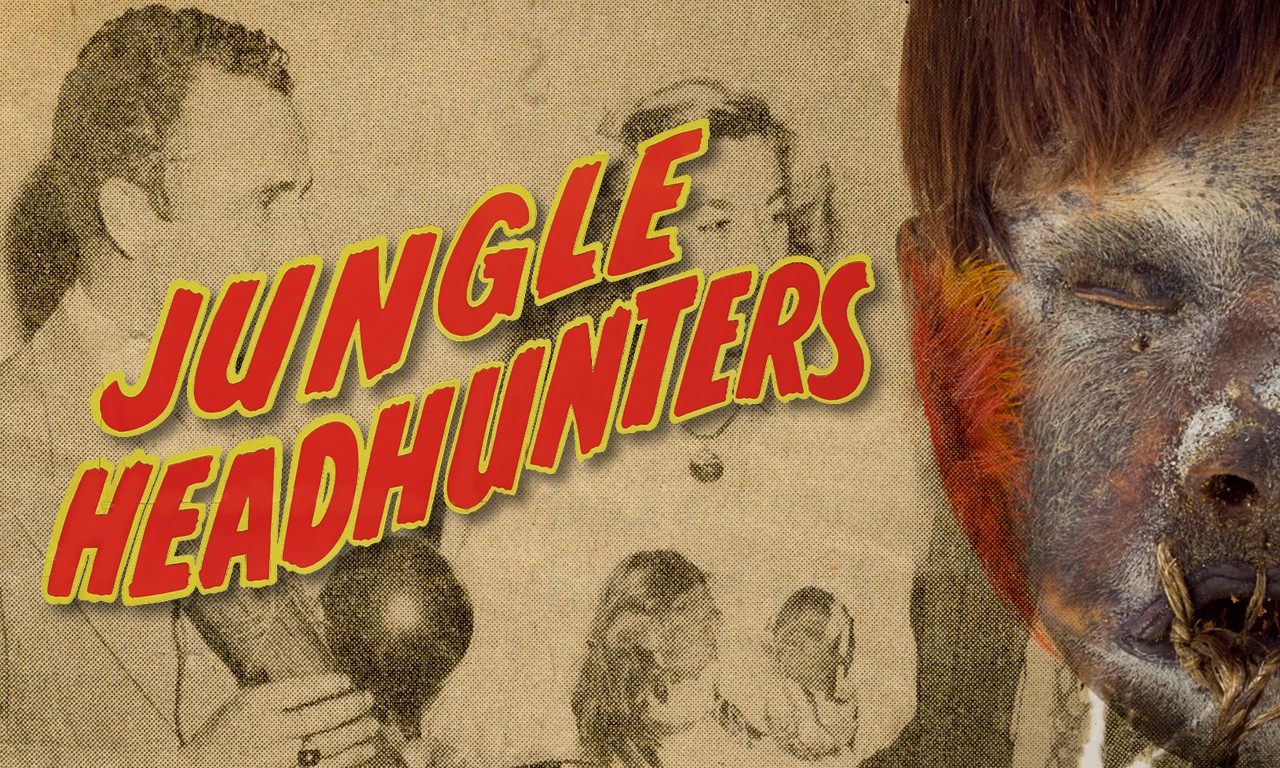 |
| Composite formed from several objects in the Gift of Barbara Lackey |
Sense and Sensationalism
Living in Ecuador along the headwaters of one of the major tributaries of the Amazon are the Shuar (Jivaro), a cultural group who have occupied roughly the same territory since at least the arrival of Europeans to the area. They are horticulturalists well-known for their gardens, foragers and fishermen of their forests and rivers, and hunters who use blowguns and bows to stop their quarry. The Shuar were one of the few groups who were successful in deterring Spanish advances into their territory and were even successful in the 1930s in getting their land protected as a reservation when there was a gold rush. However, it is rare to see the Shuar discussed outside of sensationalism, mockery, and condemnation aimed at their practice of creating shrunken heads. In the 1940s a group of explorers from California spent three months living among the Shuar, collecting objects, taking notes, and capturing footage which would become a part of a Hollywood film called Jungle Headhunters. This post examines a collection of documents, photographs, film reels, and artifacts from this expedition which was donated to the Bowers Museum in 1973.
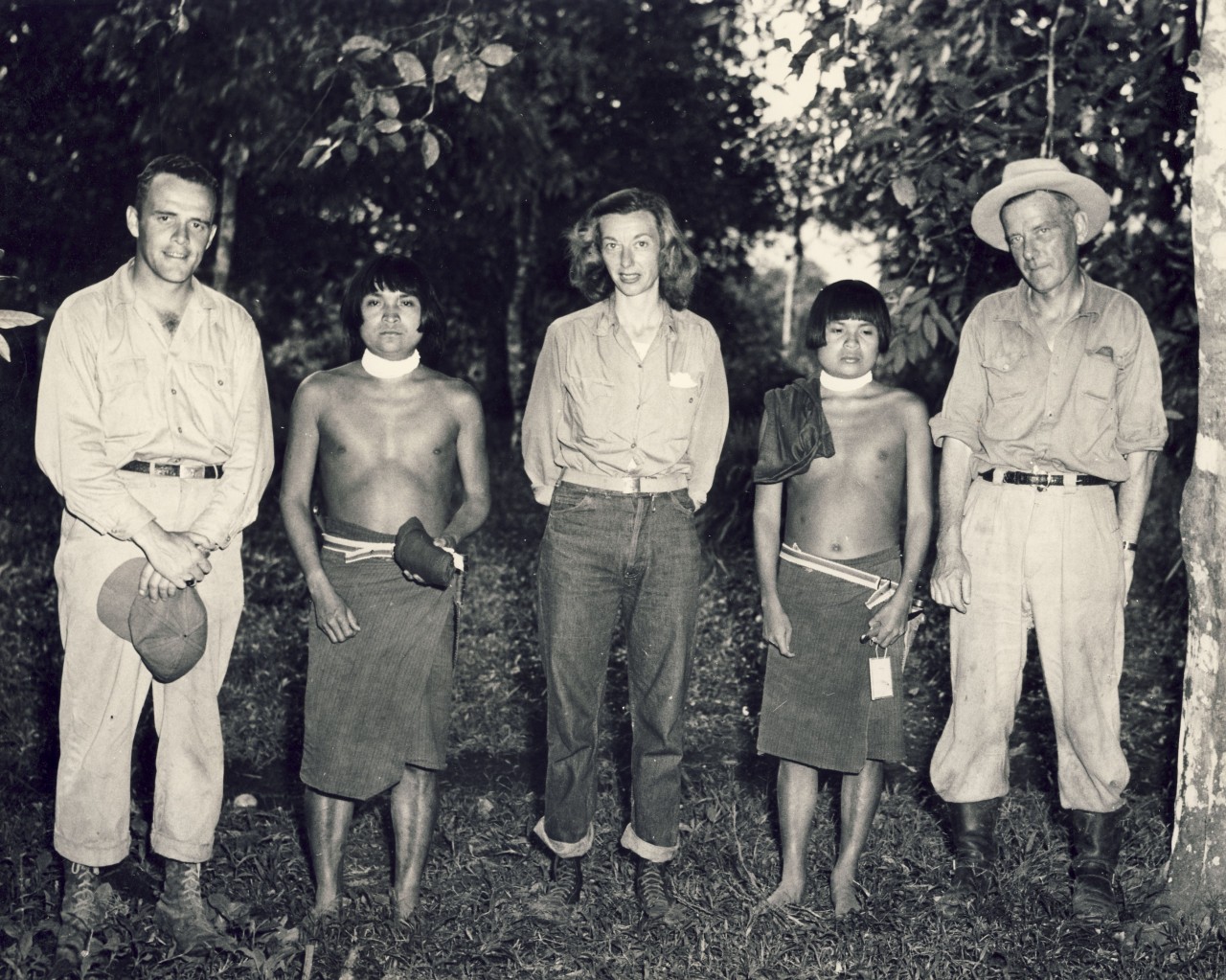 |
Jerome and Ardath Welo and Wendell Baker with Shuar People, early 20th Century
Unknown Photographer; Ecuador
Photographic print; 8 × 10 1/8 in.
39973.59
Gift of Barbara Lackey |
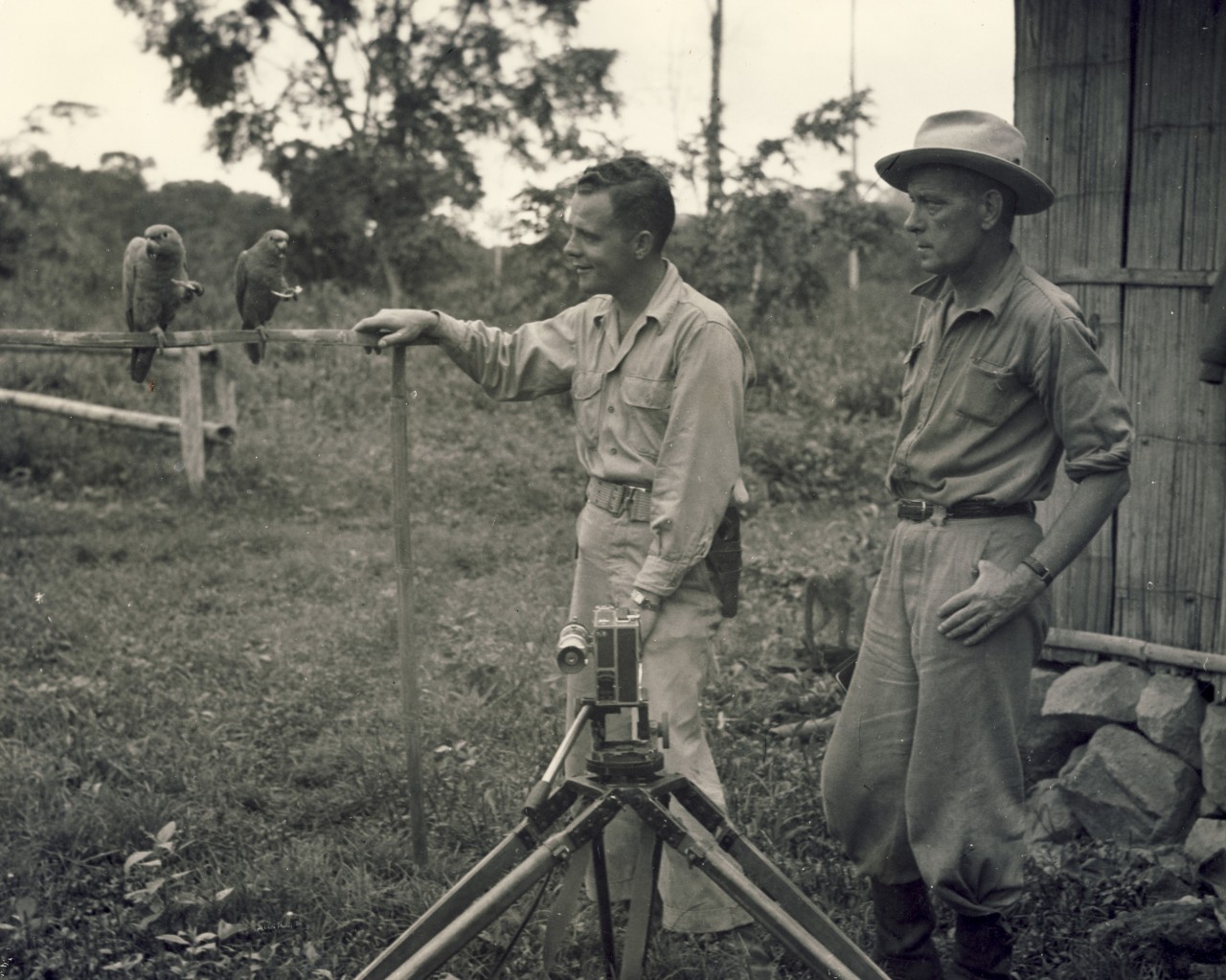 |
Baker and Welo with Parrots, early 20th Century
Unknown Photographer; Ecuador
Photographic print; 8 1/8 × 10 in.
39973.58
Gift of Barbara Lackey |
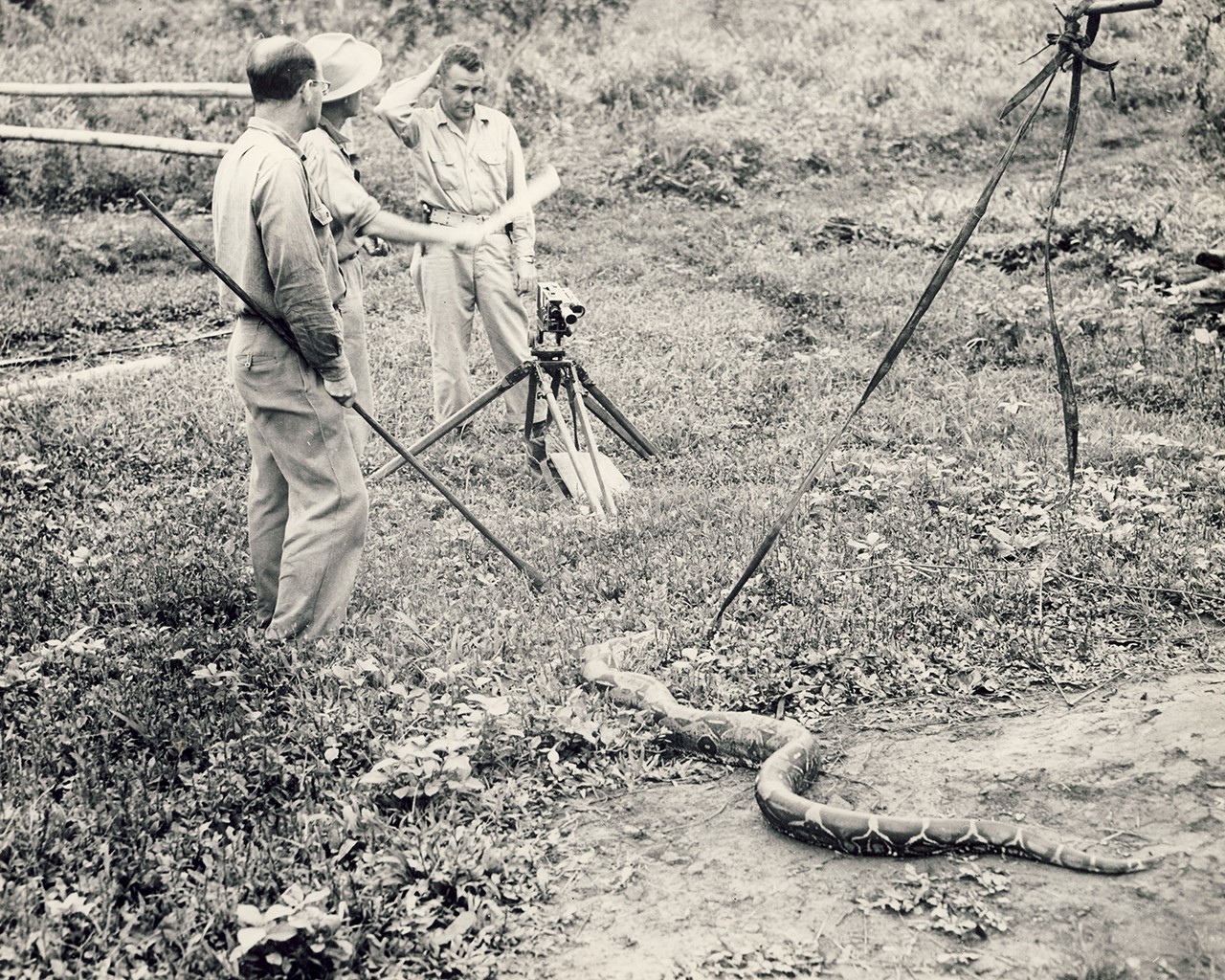 |
Staging a Boa Constrictor Battle, early 20th Century
Unknown Photographer; Ecuador
Photographic print; 8 × 10 in.
39973.35
Gift of Barbara Lackey |
Wendell Wander Well
The donor was none other than the daughter of Wendell Baker, one of the men on this expedition into the Ecuadorian highlands. Though there appears to have been at least one other camera man on the trip, her father’s two main Hollywood compatriots were Jerome and Ardath Welo. It is these three who mostly appear in photographs and in the footage that they took. It is uncertain if by the time of the first few trips, the plan was already for the footage to be used in a Hollywood production, but nevertheless, at least a third of the 1951 Lewis Cotlow film Jungle Headhunters appears to be made up of footage taken during this trip. In later interviews Baker talks about his journey as something he never would have done if he had known what it would entail. The harsh conditions of the trek to and from where the Shuar live, the threat of bodily harm should he or his partners offend the Shuar—four oil men had purportedly been slain while playing cards around the same area in the 1930s—and accusations of them being Peruvian spies all soured Baker’s outlook.
Edited clip from Jungle Headhunters Part I, c. 1946
Possibly Jerome Welo and Wendell Baker; Ecuador
16mm film; 44:50 minutes
39972.1
Gift of Barbara Lackey |
A Pain to Parse
Part of the difficulty in viewing both the footage in the Bowers collections and Jungle Headhunters itself lies in parsing out what exactly is genuine and what was done at the behest of filmmakers. Despite a disclaimer that the film is “authentic in every detail,” there is no doubt that sections of the movie are staged. The logistics of watching idly as the Shuar that Baker and the Welos were living with created a trap to catch a man, and had it sprung to seemingly fatal effect are tenuous at best, but photographs of the production definitively show that a boa constrictor is caught, stunned, and tied to a nearby tree so that Baker and Welo can heroically dismantle it with machetes on camera.
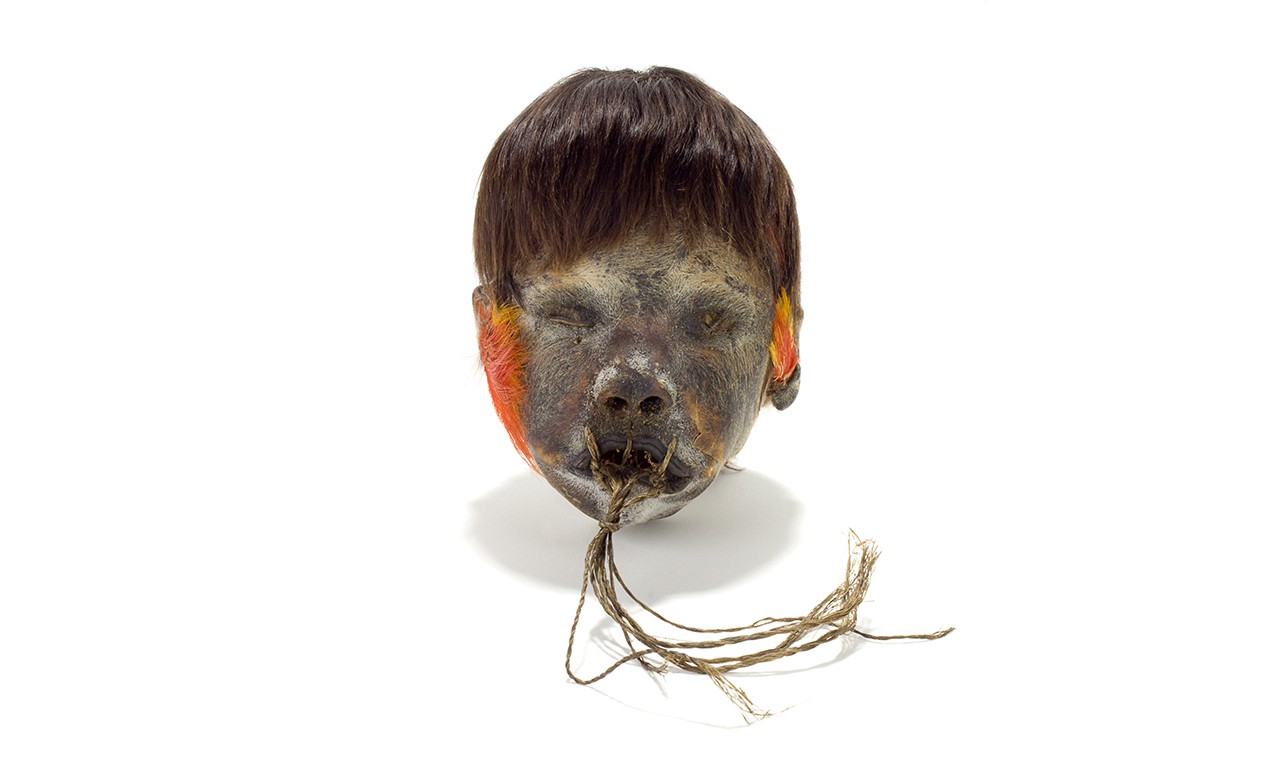 |
Shrunken Head (Tsantsa), early 20th Century
Shuar culture; Ecuador
Human head, feather and fiber; 4 3/8 × 3 1/2 × 2 1/2 in.
39963
Gift of Barbara Lackey |
Turning Heads
The shrunken head in the donation also presents something of an ethical gray area. Headhunting was historically—in one form or another—performed around the world. It is the practice of keeping the decapitated head of a captured or already dead enemy as a trophy. Shrunken heads are made by just a few cultural groups in a relatively small region of the Amazon. Traditionally, each year a Shuar village might create around one shrunken head. The process for creating one such head—at least according to Baker—is as follows: the head is removed from the body of an enemy warrior, an incision is created through which the skull and its contents are removed, the skin and hair are placed in a boiling mixture of water and a local vine for three to six hours until the skin has shrunk to about a third its original size, the head is filled hot sand and rocks and it is shaped while it dries from the inside and out, the stones are removed and any orifices are sewn shut. Foreign curiosity with shrunken heads meant that the production of both genuine shrunken heads—until their trade was outlawed in the 1930s—and later of synthetic or animal heads increased. This head has never been tested but is purported to be that of a 15-year-old boy who died during a battle.
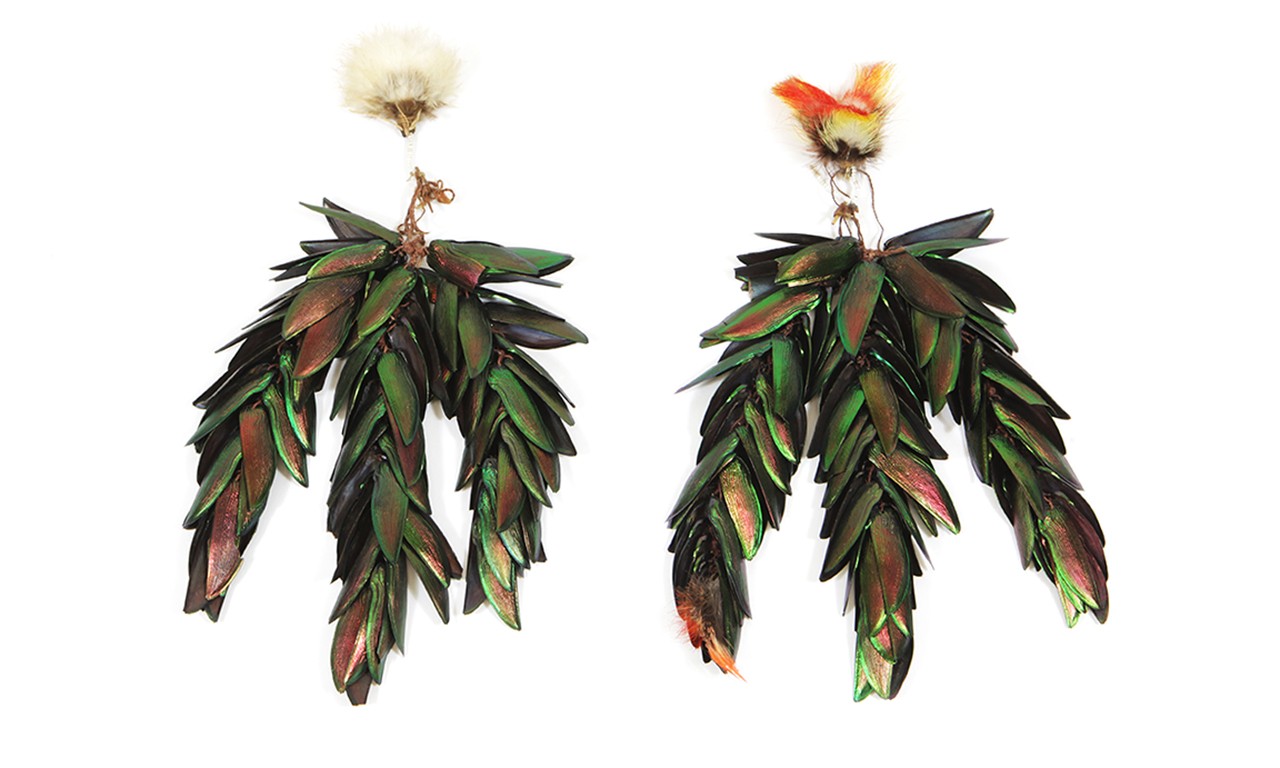 |
Ear Ornaments, early 20th century
Shuar culture; Ecuador
Beetle wings, feathers and fiber; 7 3/4 × 4 3/8 × 1/2 in.
39970
Gift of Barbara Lackey |
Jewels of the Amazon
Like a lot of Amazonian groups, the Shuar wear vibrantly colored ornaments made from local fauna. Headbands and earrings are accentuated with bright red and yellow feathers and beautiful earrings such as these are made from the wing casings of the giant ceiba borer beetle, Euchroma gigantea. Photographs taken during the expedition show that these earrings were exclusively worn by men, and in this lies the true value of what Baker and the Welos accomplished. Their archive includes candid images and footage which offer genuine snapshots into the daily life of a people who had already resigned themselves to acting as stereotypes of what Europeans might expect. Supplemental notes even assert that some scenes of the Bowers reels were directed by the Shuar themselves.
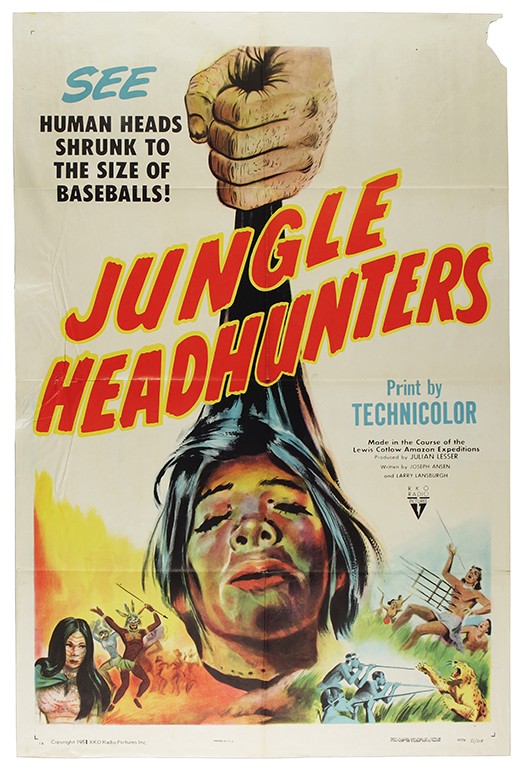 |
Poster for Jungle Headhunters, 1951
Published by RKO Radio Pictures, Inc.; Los Angeles, California, United States of America
Paper and ink; 41 × 27 in.
2016.3.1
Bowers Museum Purchase |
Text and images may be under copyright. Please contact Collection Department for permission to use. References are available on request. Information subject to change upon further research.








Comments